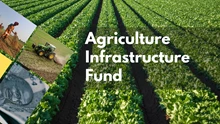
Milk is a ubiquitous kitchen staple, but the choice between grass-fed and conventional cow's milk is gaining significance due to the perceived benefits of the former.
This article delves into the comparison of grass-fed and conventional cow's milk, examining differences in nutrition, health benefits, and environmental sustainability.
What is Grass-Fed Milk?
Grass-fed milk, as defined by the United States Department of Agriculture (USDA), is derived from cows primarily fed on forage, including grass, legumes, brassica, browse, and cereals during their vegetative or pre-grain state. Unlike conventional cows, which are typically grain-fed, grass-fed cows must have access to pasture during the growing season. This unique diet contributes to a healthier animal and distinct milk composition, with claims of better flavour and creaminess.
Regulatory Landscape
While grass-fed milk is marketed as a superior choice, it's essential to note that the U.S. Grade Standards for dairy are voluntary, meaning grass-fed milk lacks an official product label. However, the American Grassfed Association has established its own standards independently, advocating for and supporting American grass-fed and pasture-based farms.
Is Organic Milk Always Grass-Fed?
Contrary to popular belief, organic milk doesn't guarantee that cows are exclusively fed on grass. Organic dairy cattle may consume organically grown forage, hay, or grain feed. While these cows have more living space and pasture access than regular milking cows, the distinction lies in the diet. Organic dairy cattle may eat organic grain, producing organic milk, but it doesn't classify as grass-fed milk.
Health Benefits of Grass-Fed Dairy Products
Grass-fed milk boasts higher levels of omega-3 fatty acids, presenting potential health benefits. Omega-3s have potent anti-inflammatory effects, supporting brain and heart health and reducing the risk of metabolic syndrome—a cluster of factors increasing the likelihood of heart disease, diabetes, and stroke. A balanced fatty acid profile in grass-fed milk may help prevent diet-related chronic conditions.
Athletes may particularly benefit from grass-fed dairy, as studies suggest omega-3s support immune systems, improve exercise performance, and enhance recovery time.
Additionally, the presence of health-promoting phytonutrients in grass-fed meat and milk aligns with the anti-inflammatory, anti-cancer, and heart-supporting properties found in plant foods.
Nutritional Comparison
In terms of basic nutritional components, grass-fed and regular milk have comparable calorie and fat content, with equal amounts of protein, carbohydrates, and calcium. The key differentiator lies in the higher omega-3 content of grass-fed milk, potentially contributing to improved health outcomes.
Environmental Impact
While grass-fed dairy products offer animal welfare benefits, the environmental sustainability of this choice is a subject of debate. Producing grass-fed milk is more land-intensive and expensive than conventional methods. The need for larger pasture areas raises concerns about land use efficiency and environmental repercussions.
The choice between grass-fed and conventional cow's milk involves weighing nutritional benefits against environmental impact. Grass-fed milk, derived from cows fed on forage, offers potential health advantages due to its higher omega-3 content and the presence of phytonutrients. However, the lack of a standardized label and the higher cost of production raise considerations for consumers. The environmental impact, particularly in terms of land use efficiency, complicates the decision-making process. As consumers navigate these choices, a balanced understanding of the nutritional, ethical, and environmental aspects is crucial.











